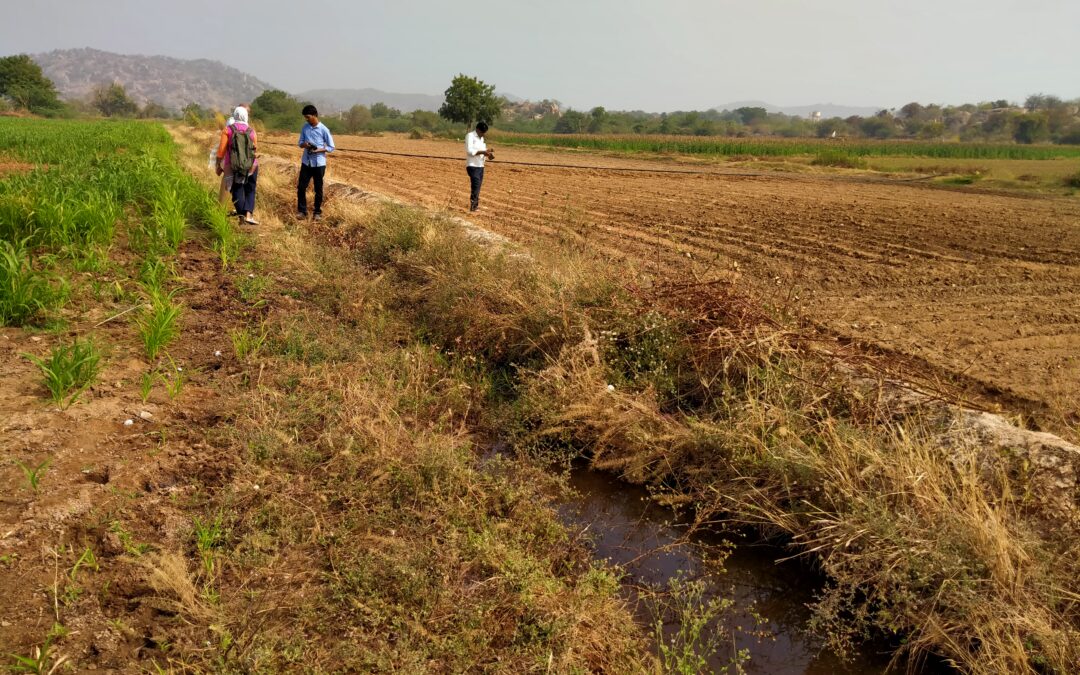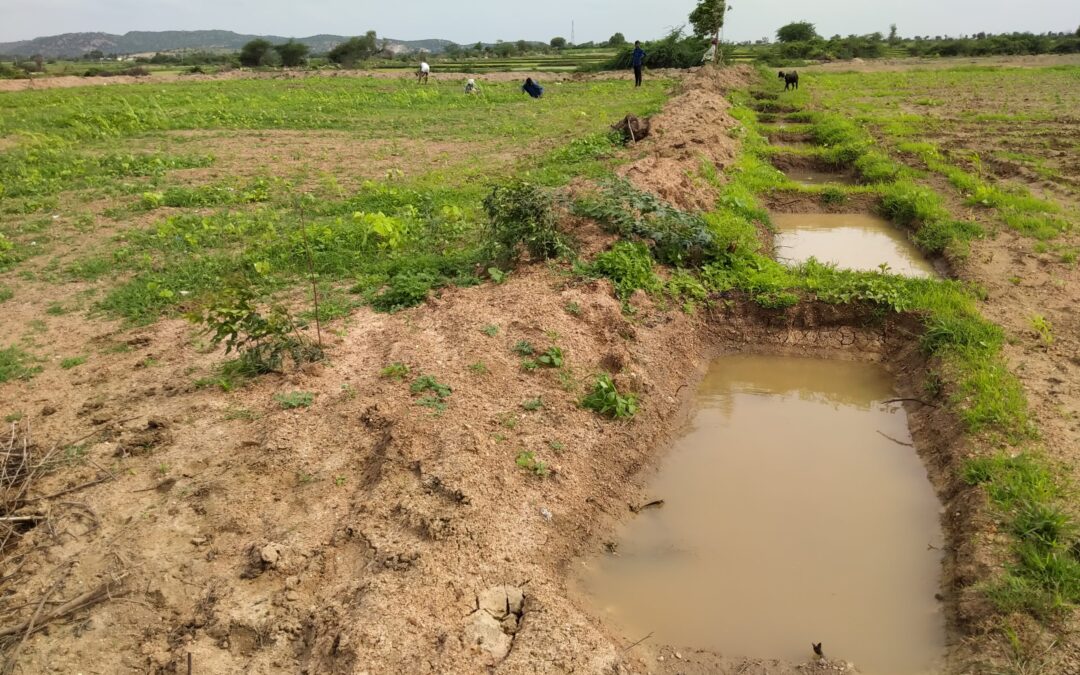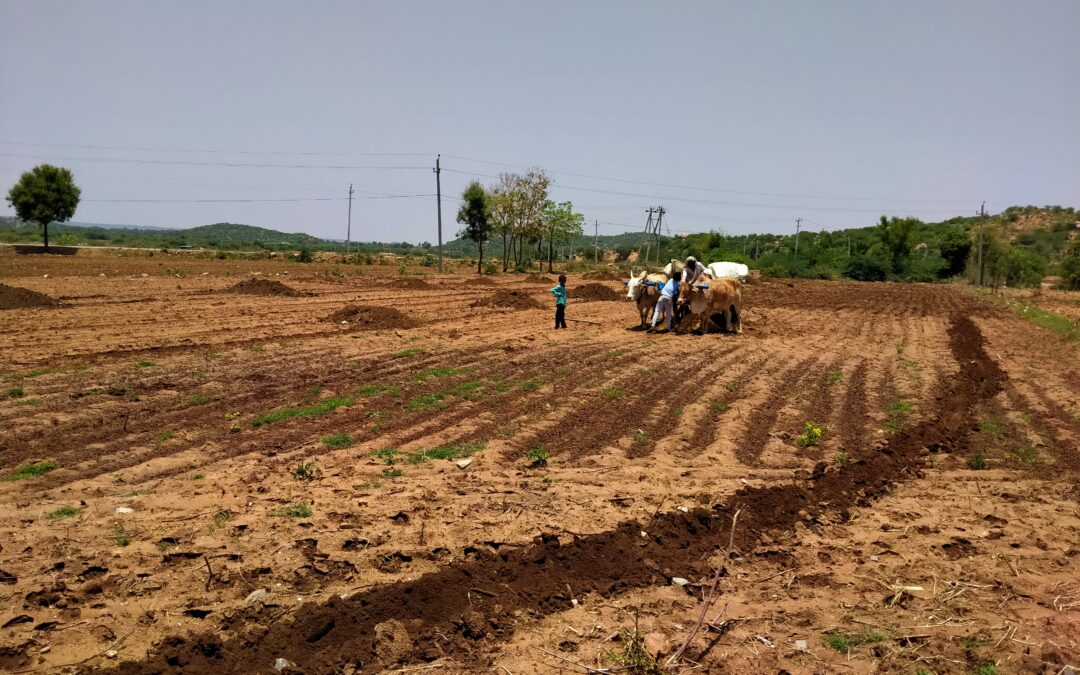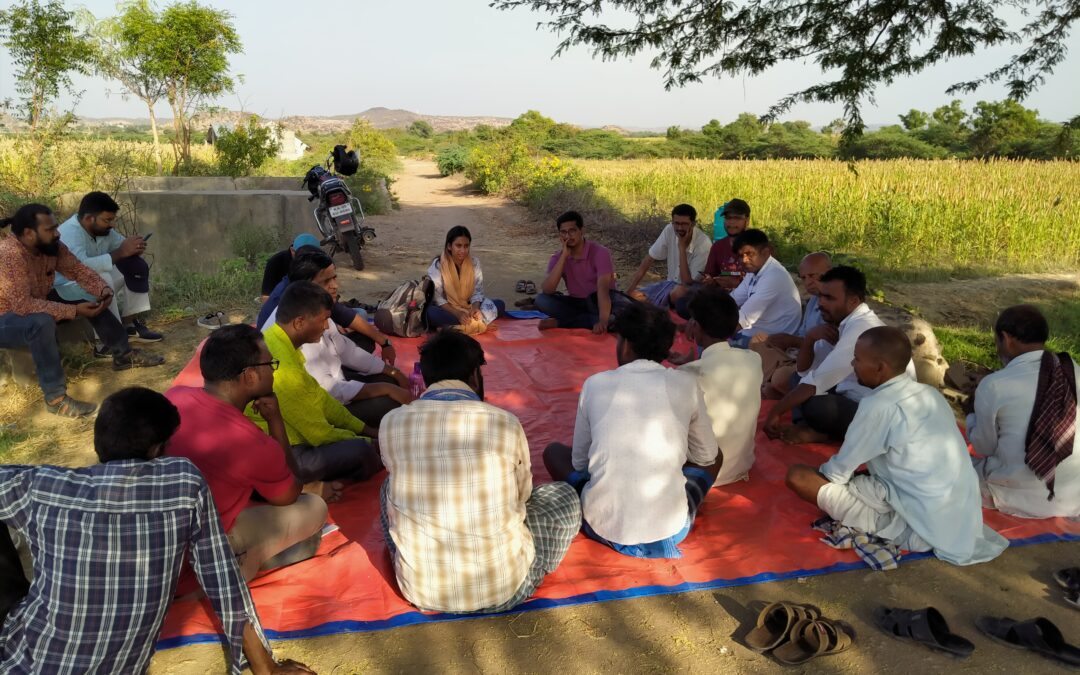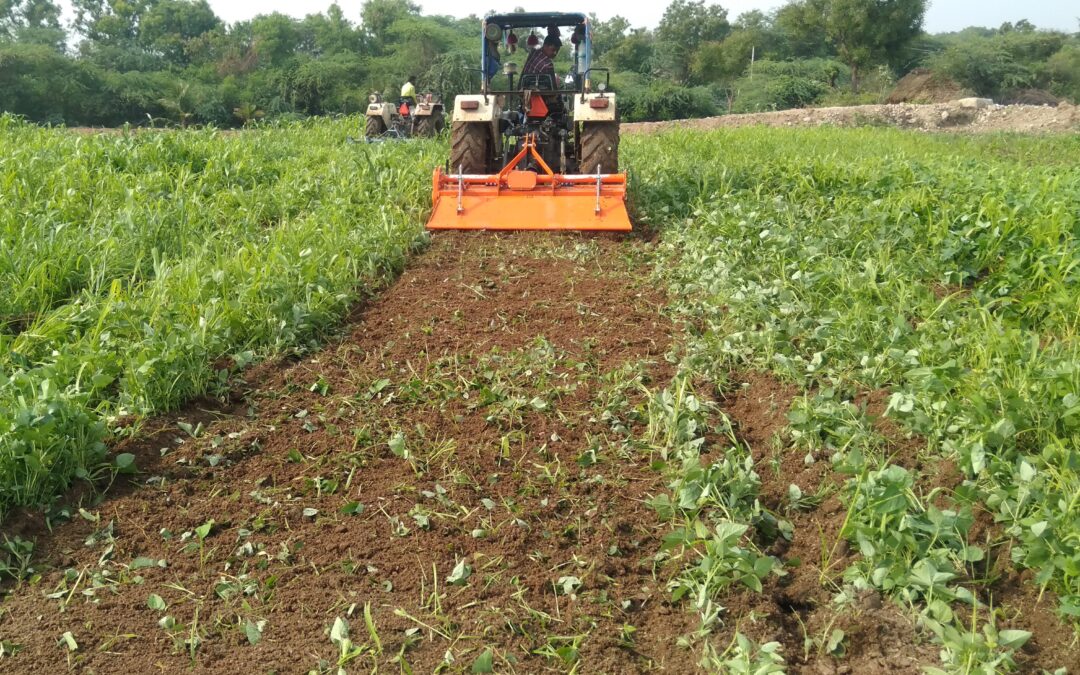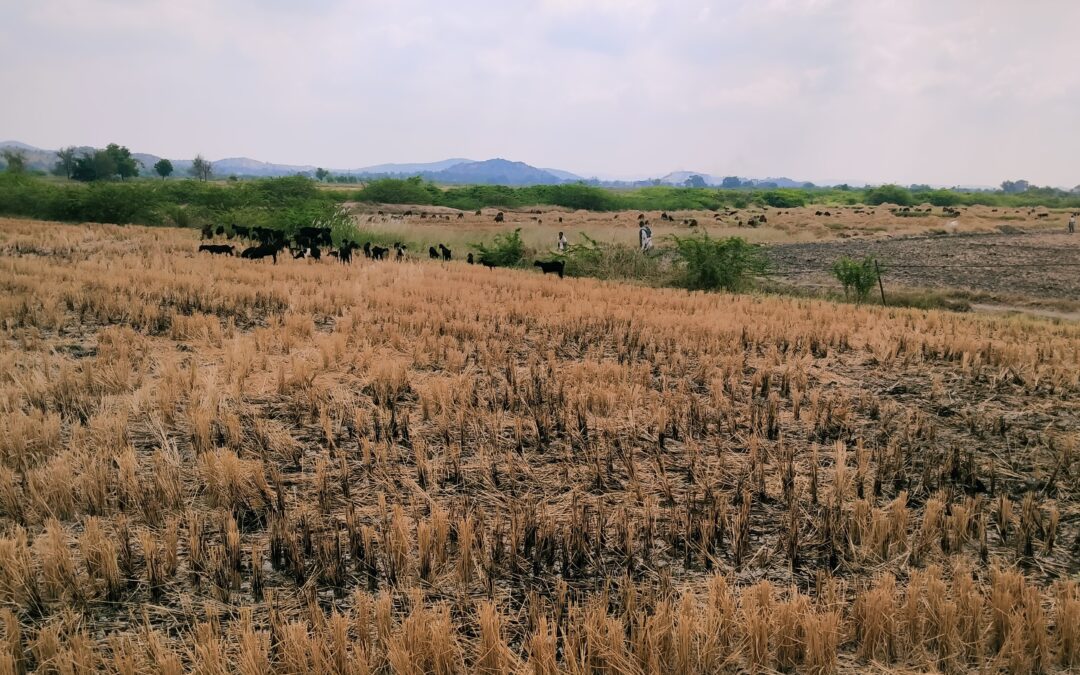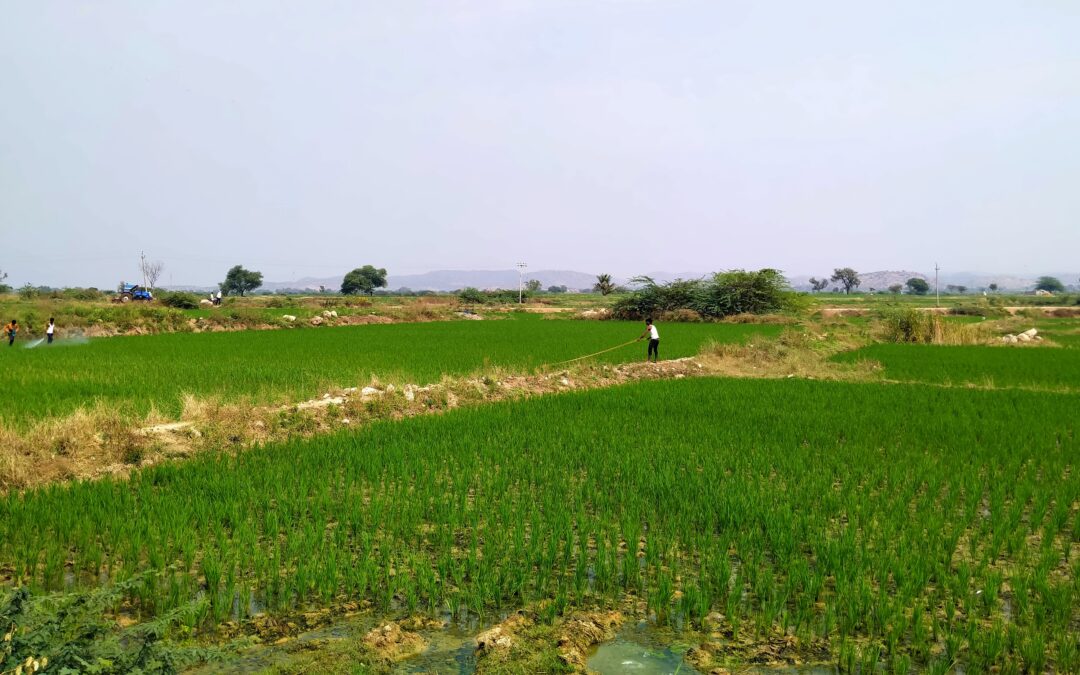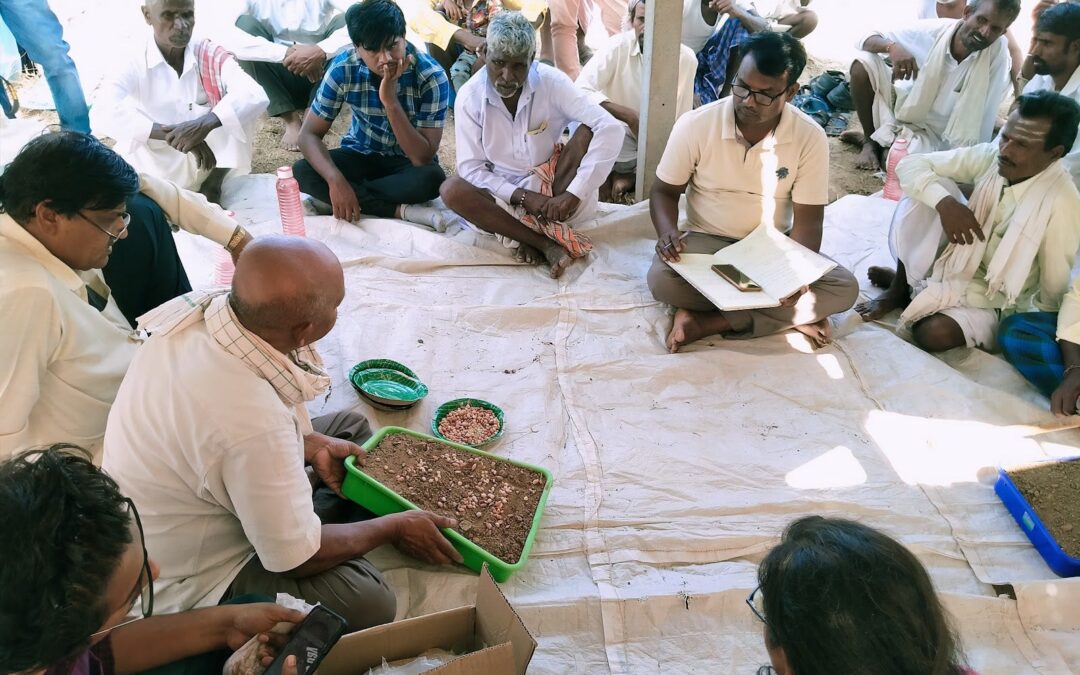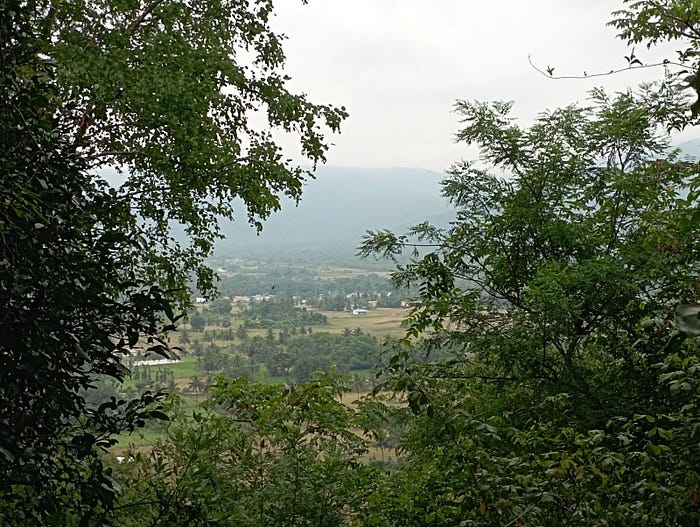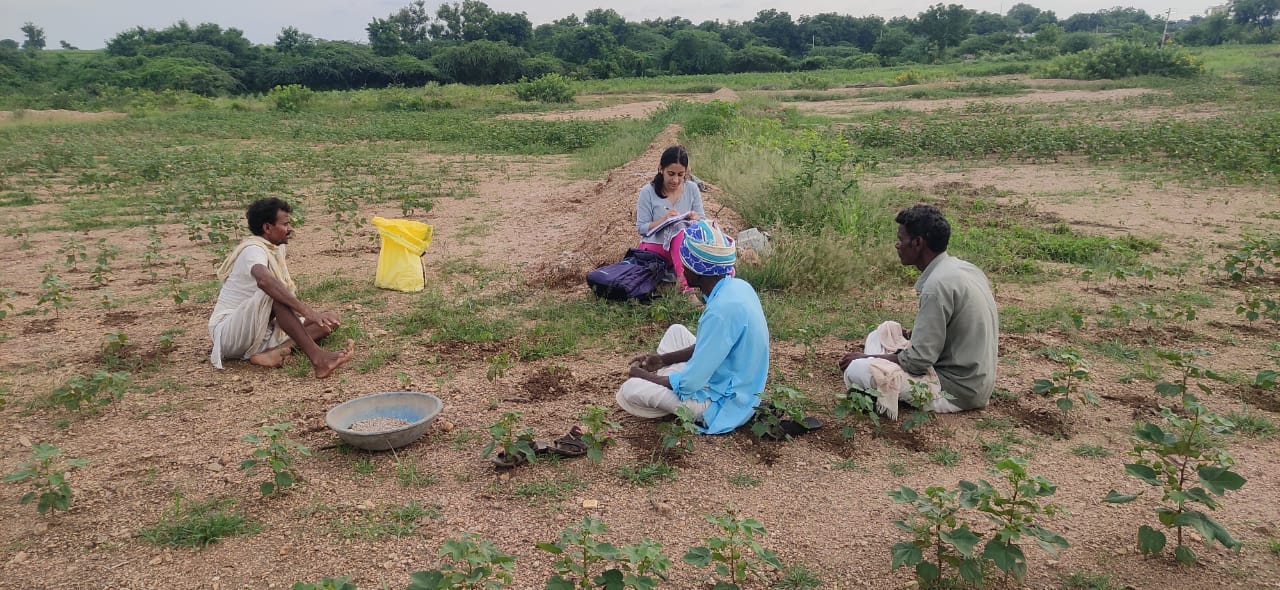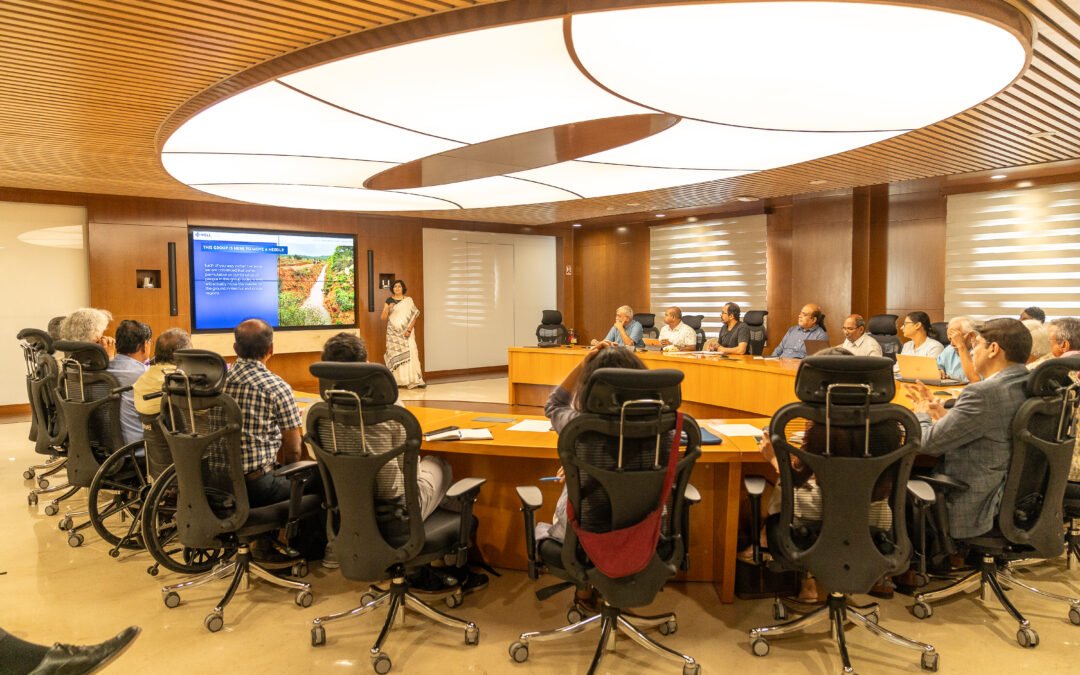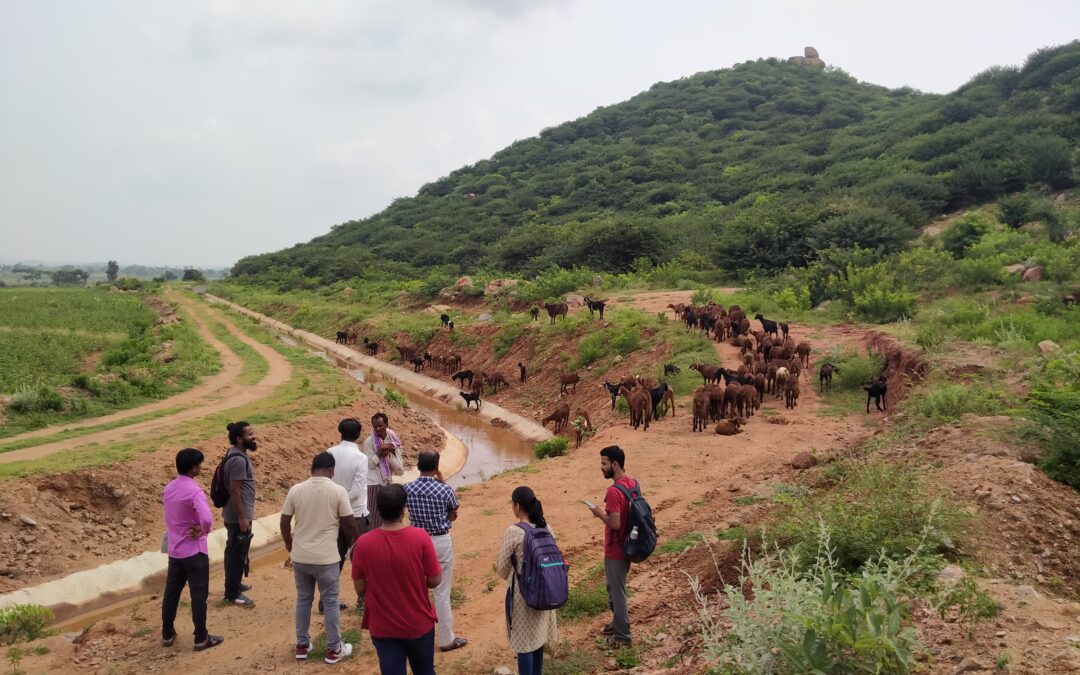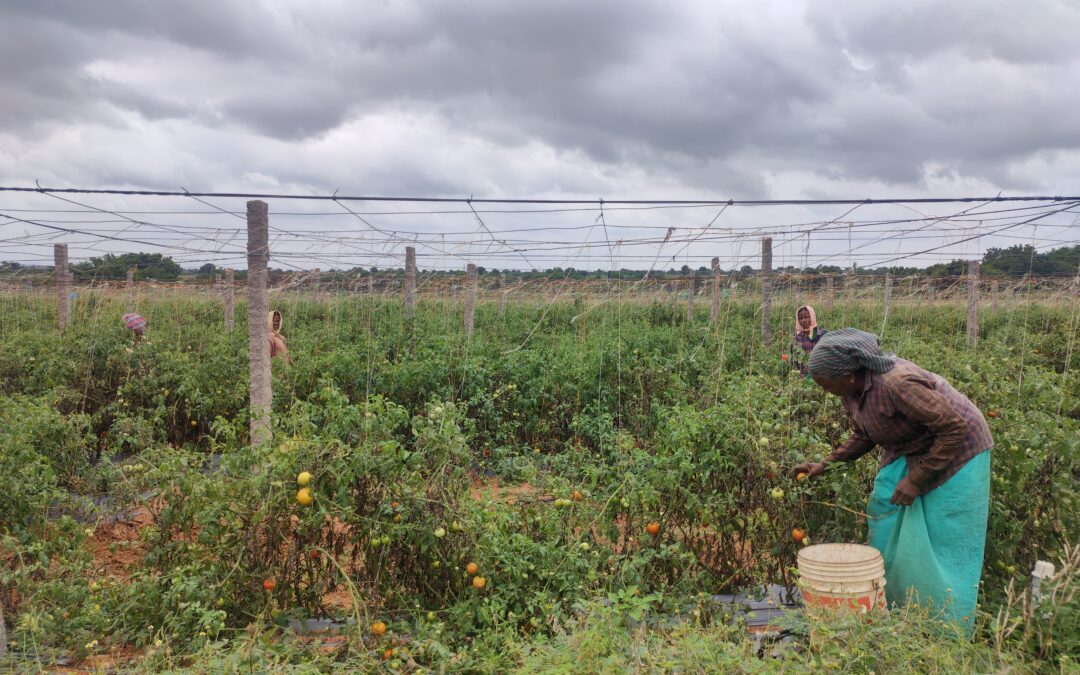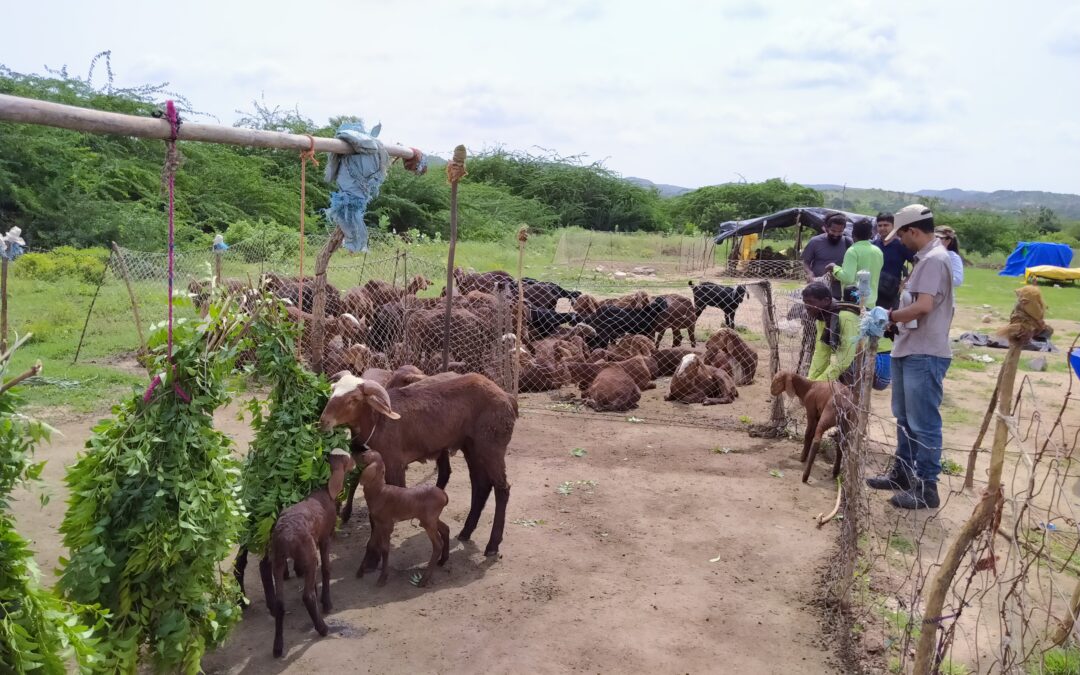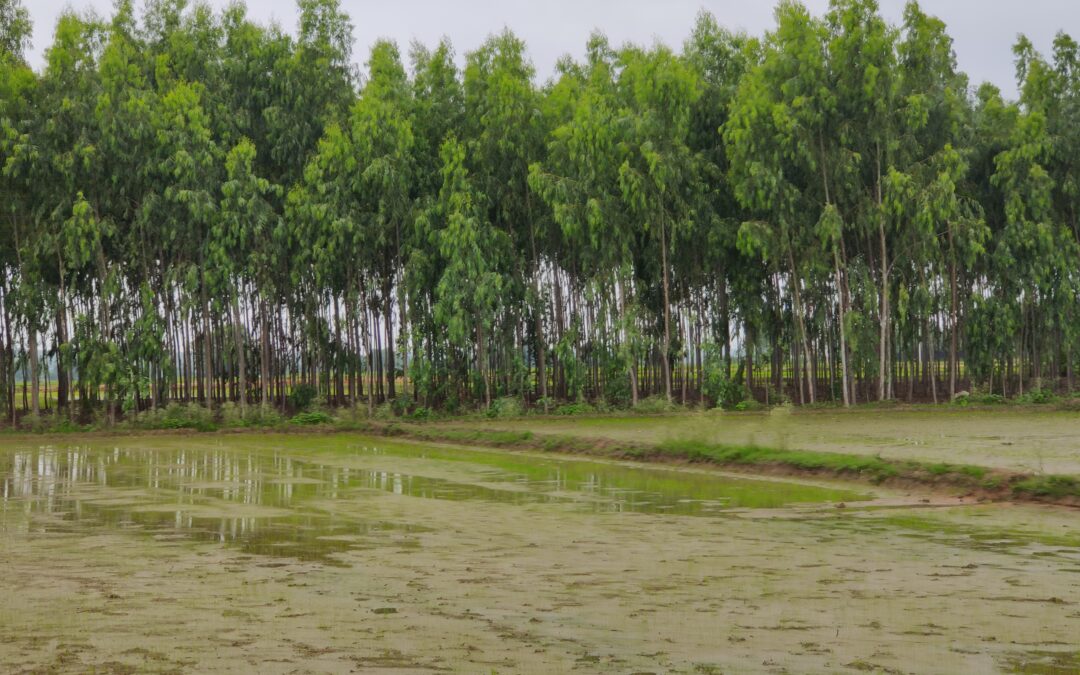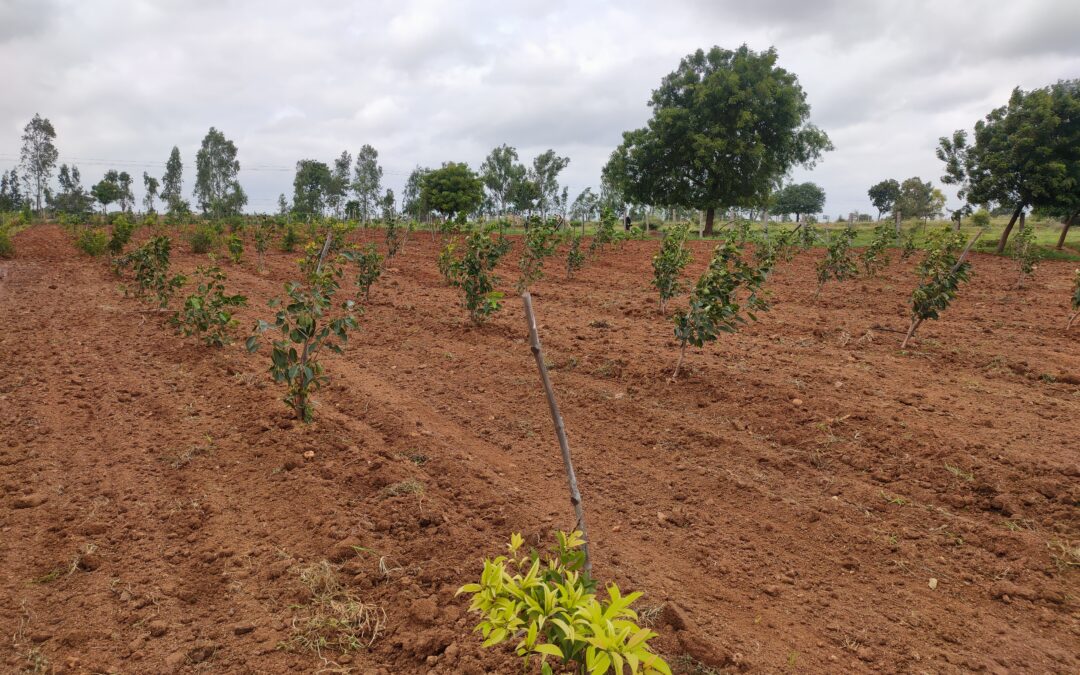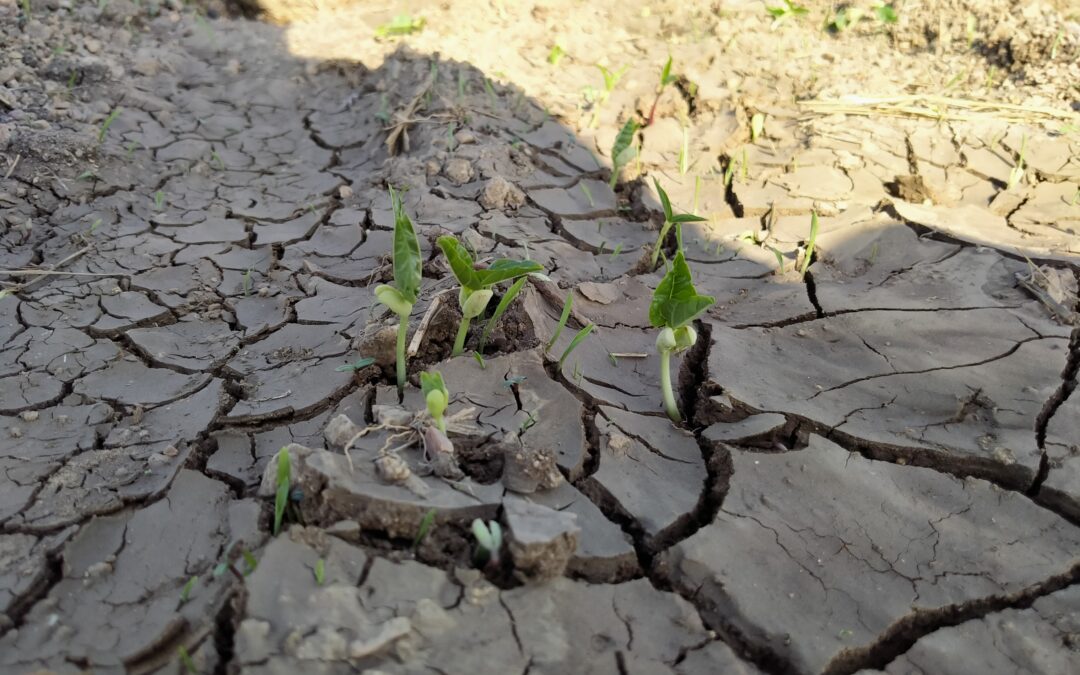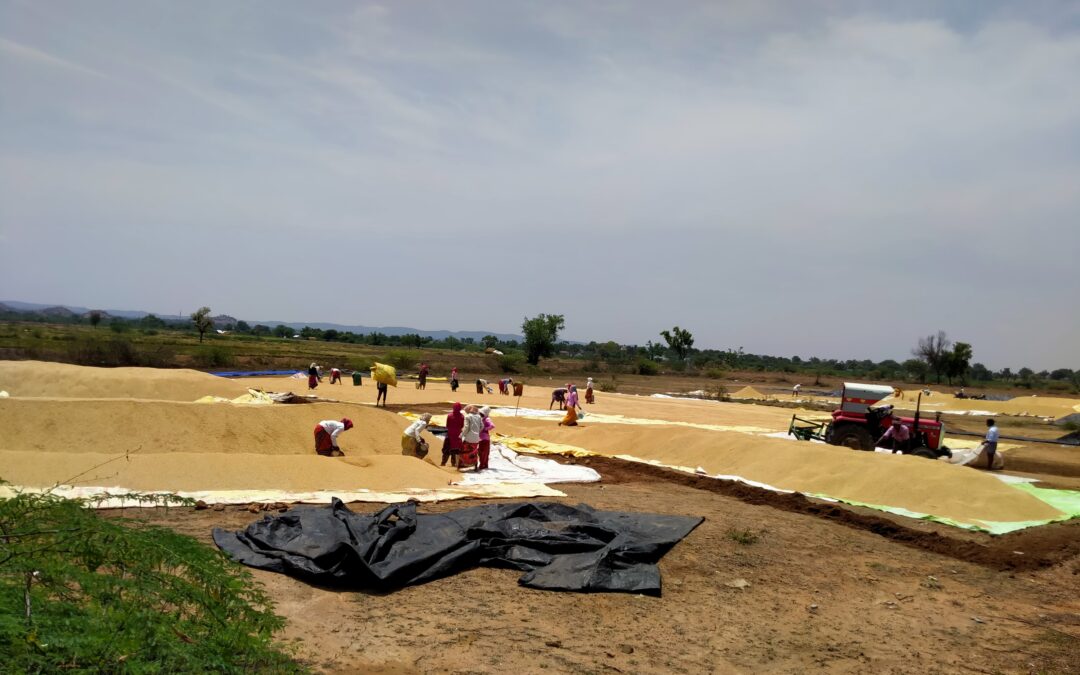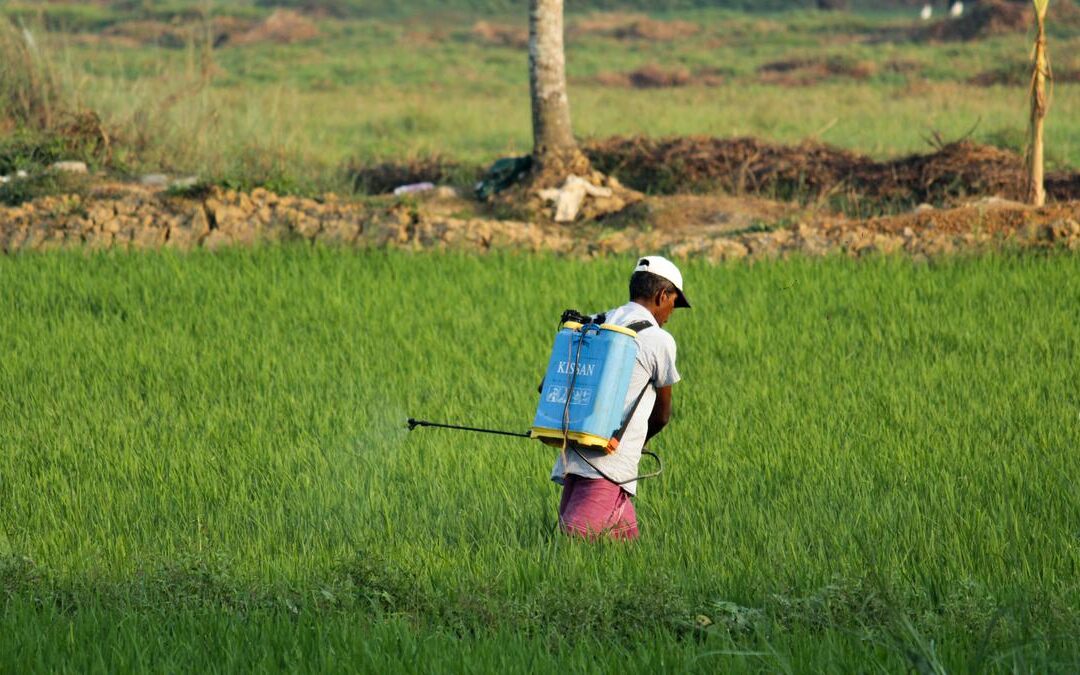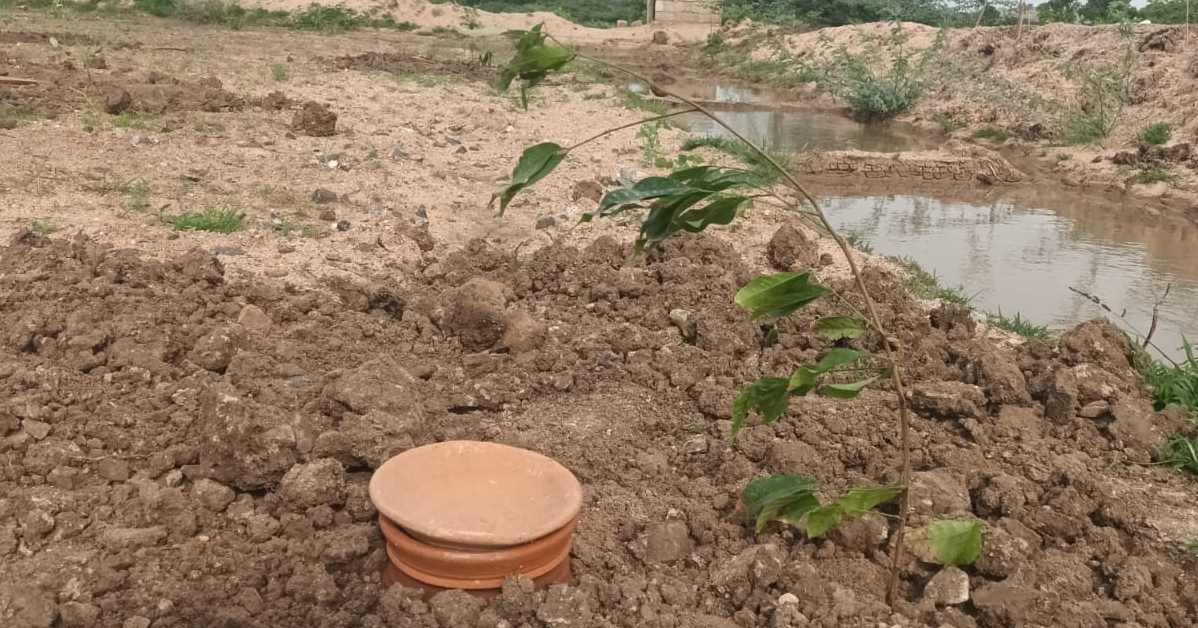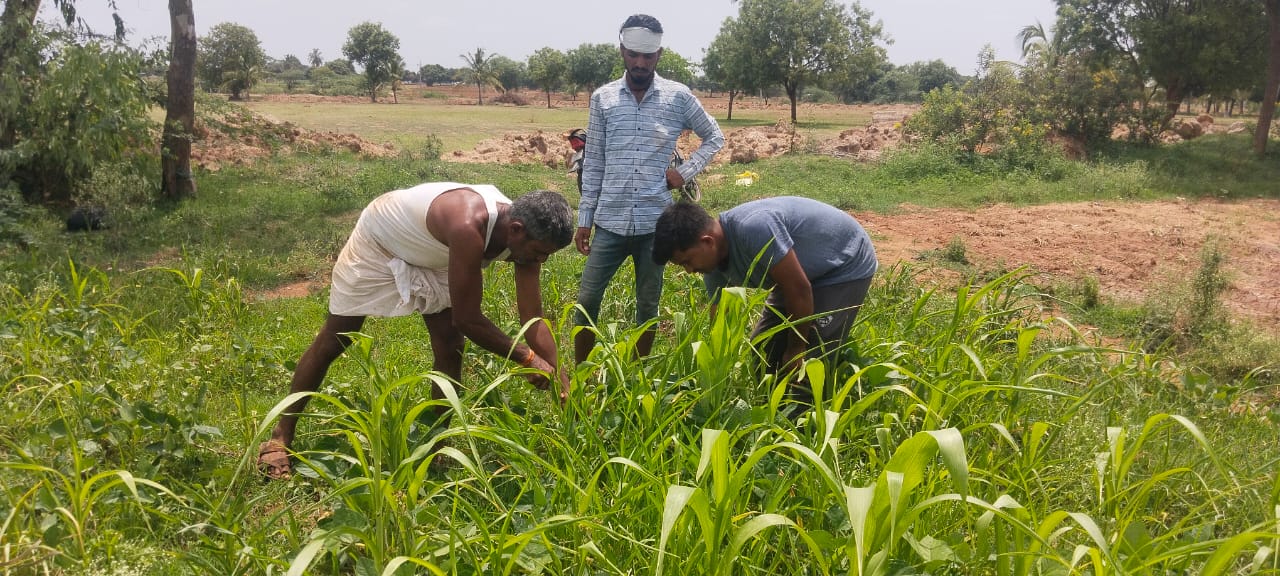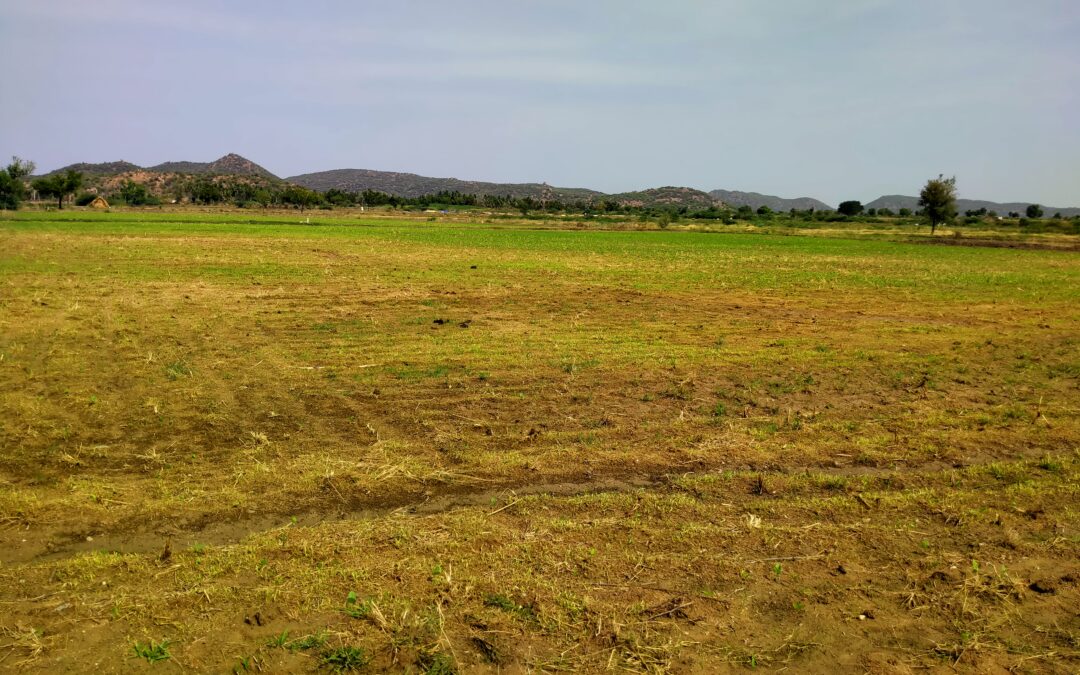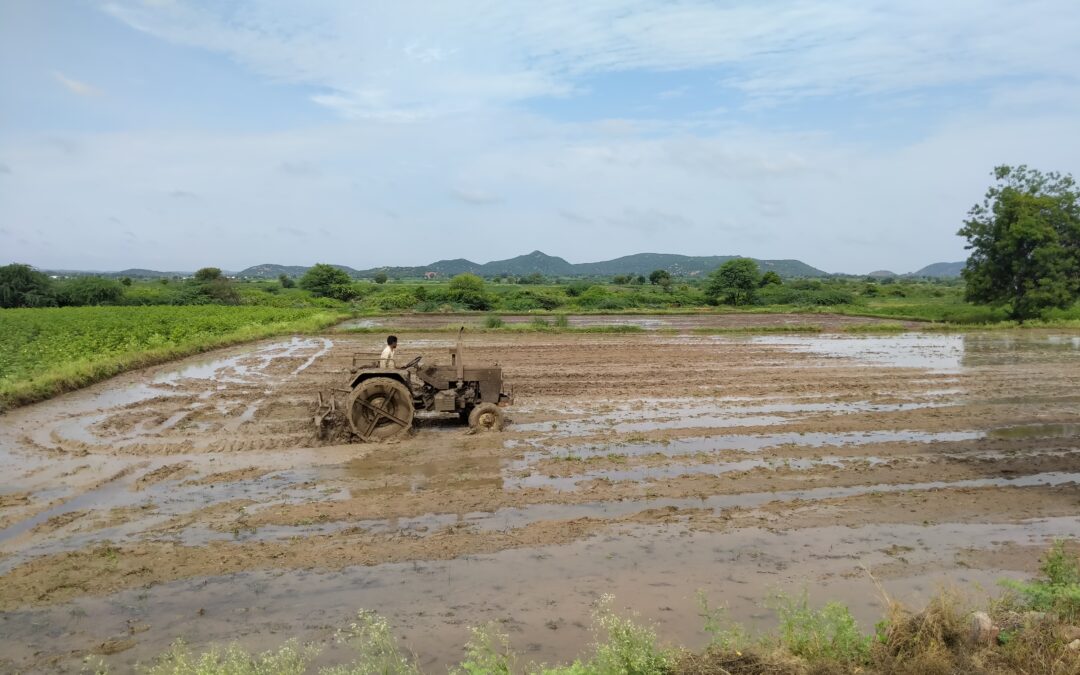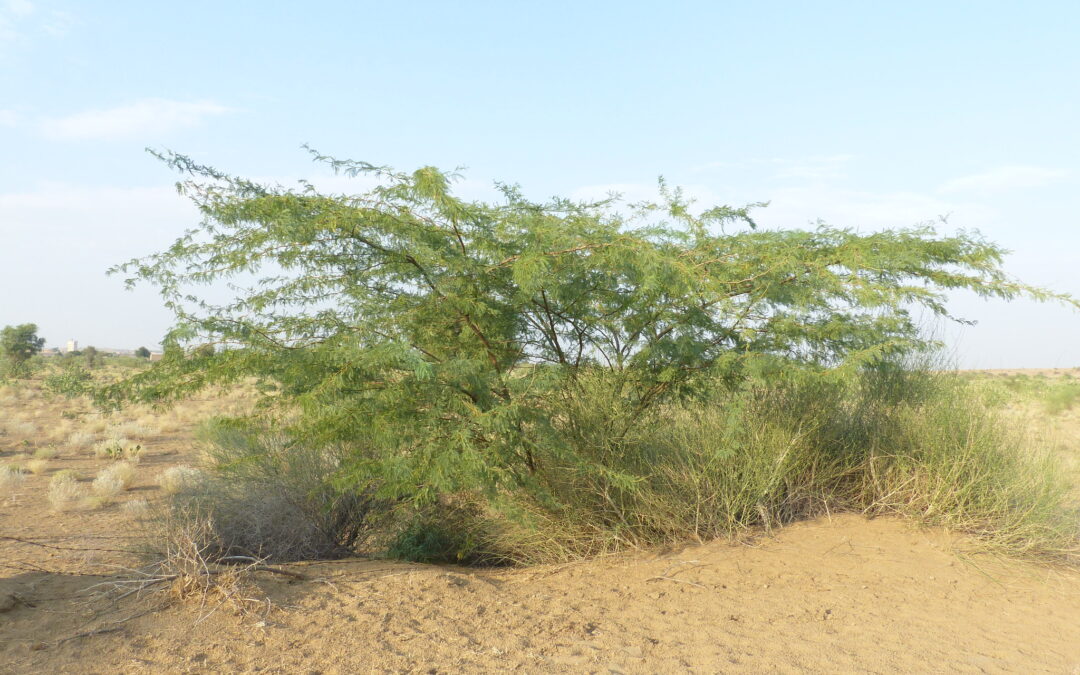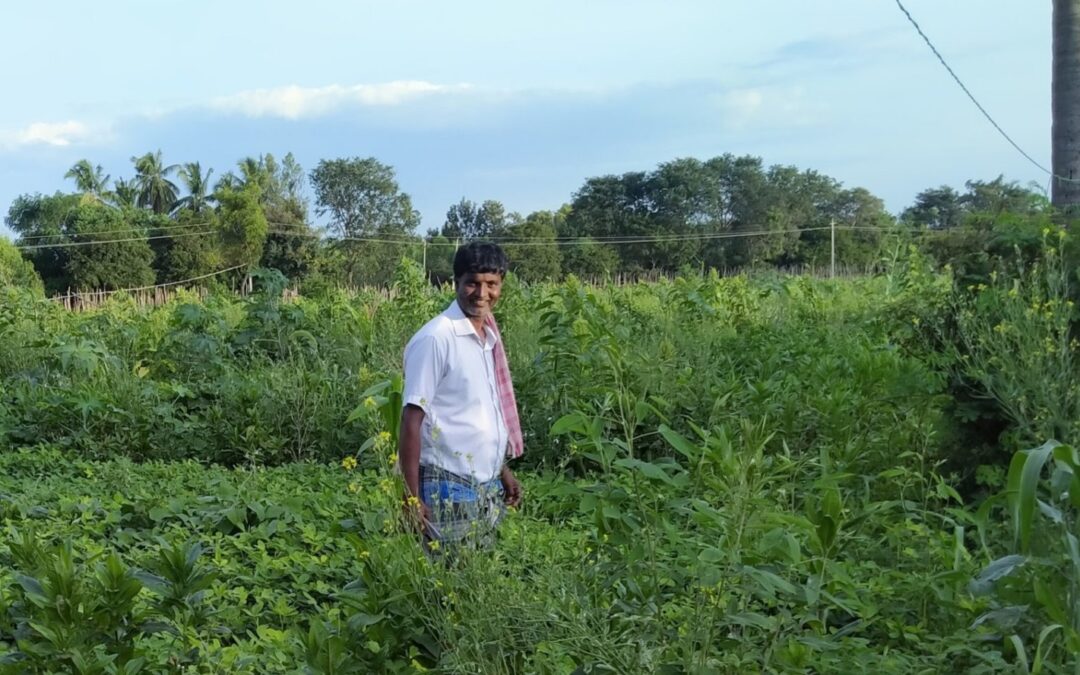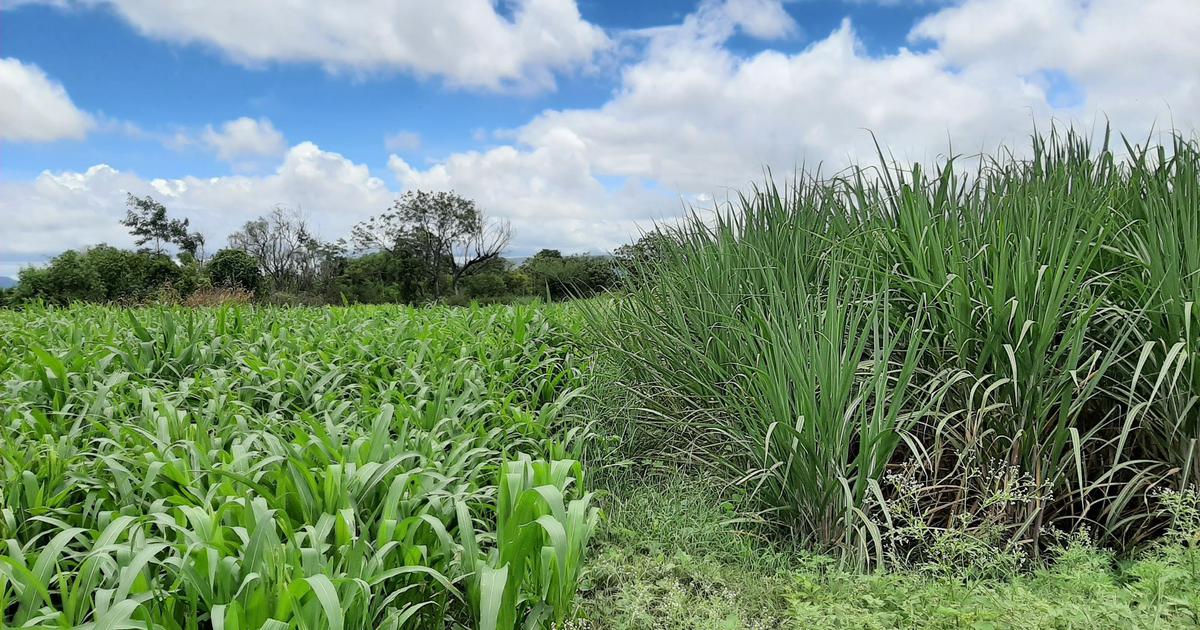Rural Futures
The Rural Futures programme seeks to transform rural lives and livelihoods by doubling farming incomes while restoring degraded land and water resources.

Context
Our Work
Publications
Context
Slightly over half of India’s farmlands have access to irrigation, with the rest depending on increasingly erratic rainfall. With groundwater levels declining in two-thirds of the country’s districts, expanding, or even sustaining, irrigation using dugwells or tubewells is a challenge. Irrigation through canals is an alternative, but they suffer from problems such as leakage and uneven distribution.
Moreover, incomes of rural residents, most of whom depend on farming and allied sectors for their livelihoods, are stagnating or falling. Crops like paddy and wheat offer better returns due to the government’s minimum support prices, but these are water-intensive and grown as large-scale monocultures. In contrast, crops like pulses, oilseeds, millets, etc. receive minimal or no support to become viable income sources for farmers. Besides, monocropping combined with the extensive use of pesticides and fertilisers can lead to land degradation, making agriculture unviable in the long run.
Thus, we need solutions that enable farmers to improve their incomes and also sustain water resources and ecosystems.
Our Work
We are working in Raichur and Chikkaballapur districts of Karnataka, where we have set up transformation labs under the STEWARDS project. These labs are collaborative spaces where communities can co-develop pathways to sustainable, equitable transitions in water and agriculture to improve resilience in dryland regions.
Our partners include University College London, DCB Bank, Nvidia, IHE Delft, Prarambha, Advanced Centre for Integrated Water Resources Management and SOIL Trust.
Our initiatives are:
1) Fostering water access and equity through better-governed irrigation in canal command areas.
Canal irrigation can help ensure that farmers have access to enough water during the Kharif season (June–October) and ample soil moisture for a second Rabi season (October–April) crop. However, it poses its own set of challenges. Canal systems are often poorly designed or maintained. On one hand, leakages due to evaporation, seepage, vegetation growth, wastage, etc. reduce the amount of water available for farmers. On the other, head-end farmers use most of the water, leaving little for tail-end farmers.
To ensure water access and equity, we are developing, implementing and socialising design principles for canal-water sharing in association with farmer water groups.
This initiative is being implemented in the parts of Raichur district that receive water from the Narayanpur Right Bank Canal.
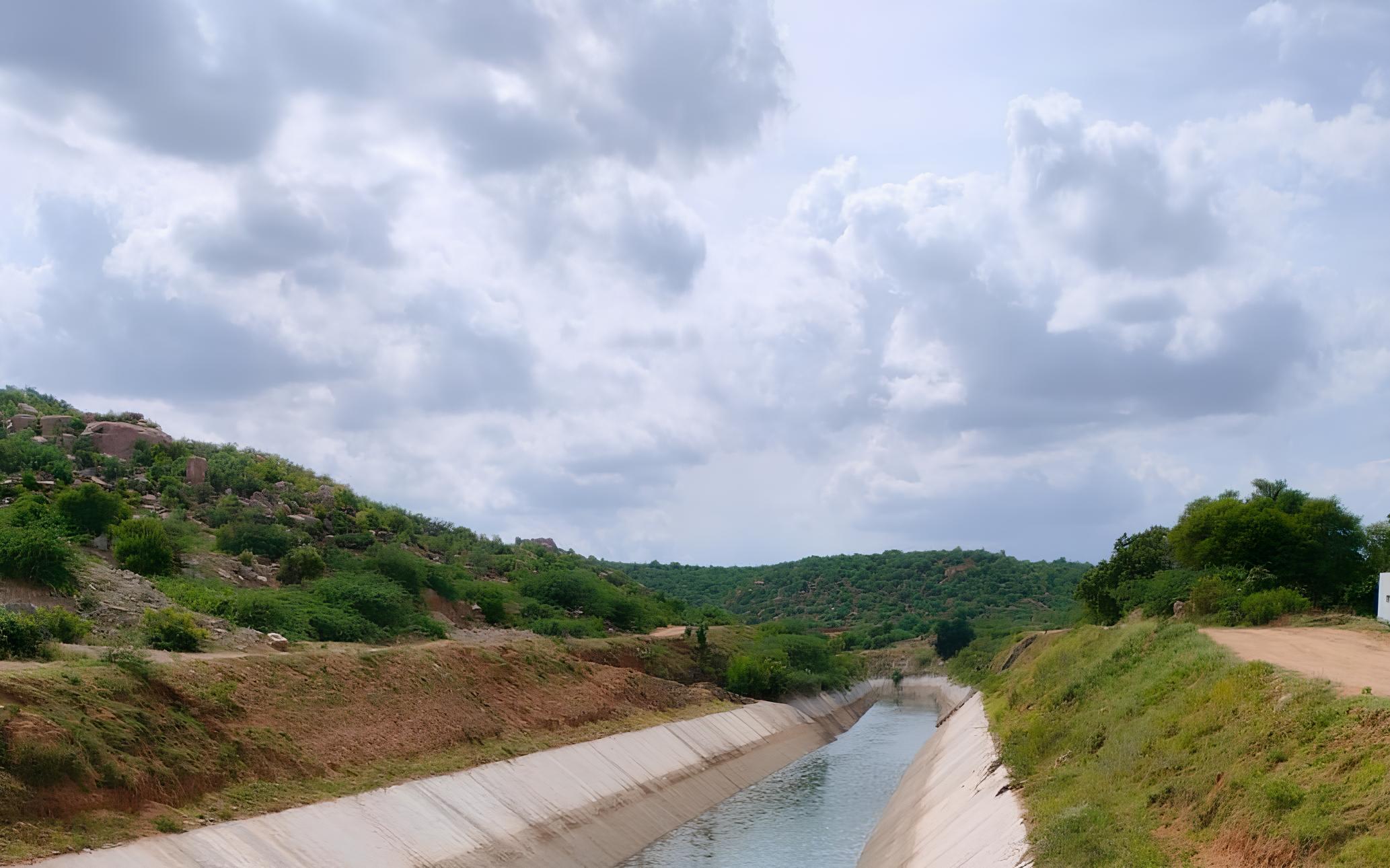
A distributary of the Narayanpur Right Bank Canal in Raichur district, Karnataka
2) Promoting protective irrigation in dryland areas.
Rainfed farmers are facing erratic rainfall and long dry spells. Amid changing weather patterns, it is difficult to ensure yields in even one season, leading to losses. We are exploring options to promote protective irrigation using tank water, groundwater and soil moisture management in the drylands of Chikkaballapur and of Raichur, where canal water is not available.
*****
For both the above interventions, we are documenting marginalised communities’ needs and aspirations regarding water management. We shall use insights from this exercise to build their capacities through initiatives such as community hydrology programmes.
3) Piloting labour-saving technologies to enable diversified cropping.
Diversified cropping requires relatively fewer inputs like fertilisers, pesticides, etc. and also reduces the risk of crop failure. However, we have observed on the field that while monocropping systems have well-developed mechanisation techniques, this is not the case for diversified cropping. The tools tend to be rudimentary, the fields often require manual de-weeding and different crops have to be harvested at different times. Thus, diversified cropping is labour-intensive and women usually have to bear the burden.
To ensure that diversified cropping does not increase farmers’ burden, we are piloting labour-saving technologies (such as manual/electric weeders, EV tractors, harvesters and threshers for pulses, millets and oilseeds, transplanters, seed drills, etc.); training landless farmers to use these; and helping them become entrepreneurs.
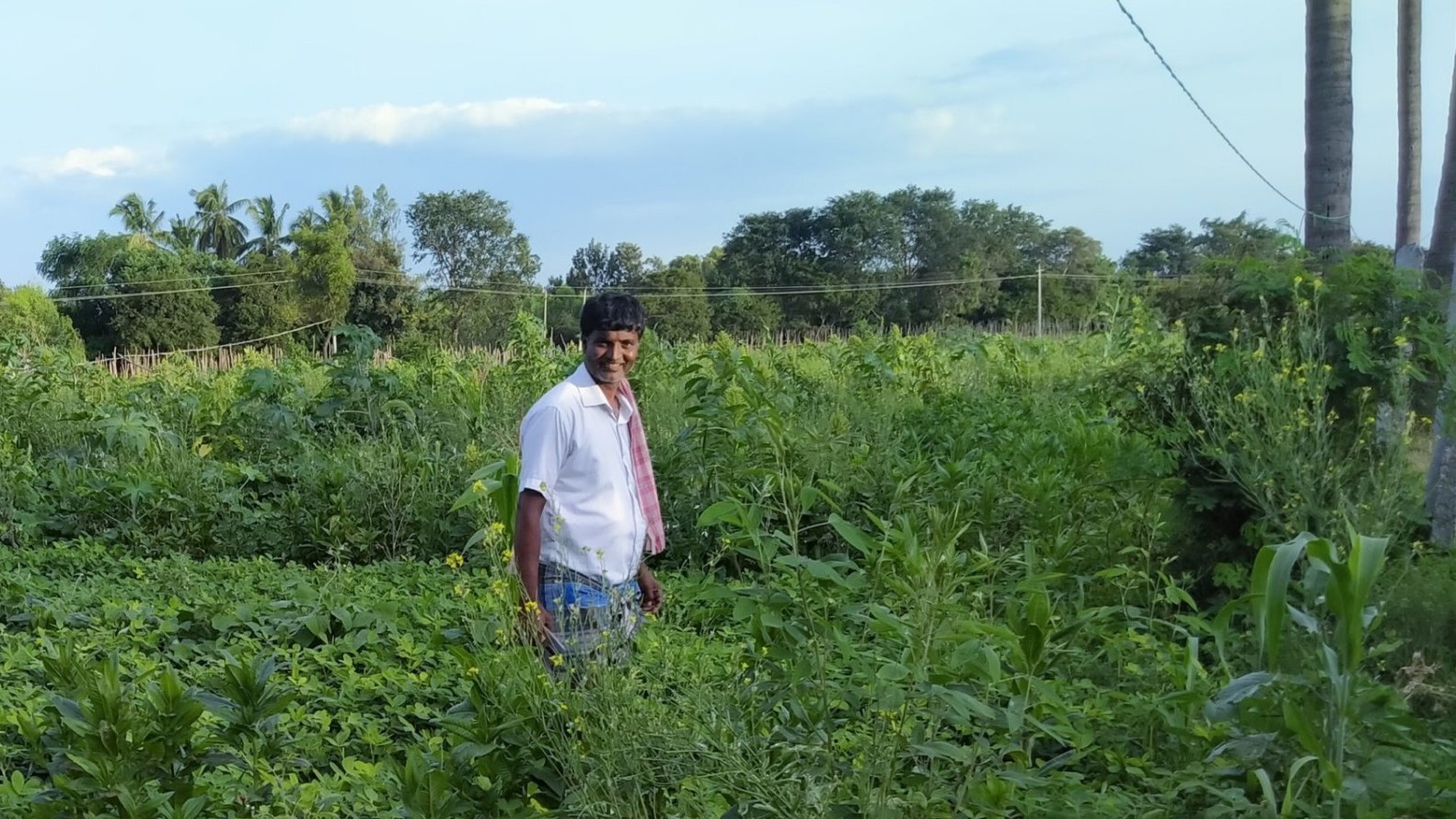
Traditional diversified-cropping systems such as Akkadi Salu promote biodiversity and help farmers weather risks such as erratic rainfall, degrading soils and unpredictable markets
4) Facilitating market access to ensure farmers get good prices for their produce and grow diversified crops.
Farmers grow paddy because there is a ready market and a minimum support price offered by the government. Its cultivation ecosystem is well-developed — seeds, pesticides, machines, buyers etc. are in place — which other crops often lack.
Moreover, crops like millets, pulses, and oilseeds do not have an organised market, making it difficult for farmers to get minimum support prices or fair prices at local mandis (markets). Growing large amounts of a non-staple cash crop like chilli or cotton can also lead to a glut in the market and a sudden drop in prices.
We are mapping existing links to markets, barriers to increasing incomes, and current approaches to aggregation, value addition, and procurement contracts to develop and test strategies on improving farmers’ access to markets.
5) Researching the extent of land fragmentation and barriers to the better use of fallow land.
With increasing agrarian distress and aspirational migration to cities, a lot of rural land is left fallow. In some cases, the land has many owners or is locked in legal disputes and thus, there is no investment in land productivity or soil quality.
We are researching the barriers to the productive use of this land — such as concerns that the land could be usurped or the lack of enforceable contracts — and how these can be overcome.
Publications
How Water Shapes the Lives of Farmers in Raichur: Field Notes from Mandalgudda
We’ve been researching land and livelihoods in Raichur over the past two years. The different strands of our analyses reinforced a known fact of life in the region – that water shapes decisions and livelihoods.
Field Notes from Raichur: Why MGNREGS Remains Key for Water Conservation in Rural India
Digging trench-cum-bund pits is a priority under the National Rural Employment Guarantee Scheme, resulting in both livelihood and water security.
A Package of Practices for Climate-Smart Agriculture
Over the past year, we have been working with our grassroots partner Prarambha and farming communities on a a curated, people-centric set of interventions to revive Raichur’s degraded lands and improve farmer incomes
Restoring Landscapes and Improving Farmer Income, the People-Centric Way
Farmers in Karnataka's Raichur district face falling income and struggle to cultivate in degraded land. WELL Labs is working with Prarambha to document concerns, build trust and identify ways to improve farmer income and sustain the ecology of the region.
Explainer: How Green Manure Can Help Degraded Farmlands Sustain Themselves
The traditional agricultural practice of green leaves manure involves creating manure and fertiliser from natural, homegrown plants as sources of various nutrients for soil
Part 2: Livelihood Lessons and Insights from Journey Mapping in Mukkanal
A journey mapping exercise gave us a deeper understanding of livelihood patterns, challenges, and the impact of land degradation on households in our land restoration pilot site
Part 1: Journey Mapping to Plan the Future of Mukkanal’s Farmers
Through journey mapping, farmers can have a say in the blueprints of their own progress
Soil Workshop in Raichur: Farmers Keen on New Methods to Rebuild Soils
Around 35 farmers attended the two-day workshop held in Raichur’s Devadurga taluk to learn about how they can test and improve soil quality,
Field Notes from Sittilingi Valley: How a Farmer Collective Addresses Both Healthcare and Agrarian Distress
The Sittilingi Organic Farmers Association (SOFA) shows how collectives founded on strong community values can benefit small and marginal farmers and the local ecology.
Raichur Land Restoration Pilot: How We Studied the Local Context
Rural FuturesThe Rural Futures programme seeks to transform rural lives and livelihoods by doubling farming incomes while restoring degraded land and water resources. Context Our Work Publications Context Slightly over half of India’s farmlands have access to irrigation, with the rest depending on increasingly erratic rainfall. With groundwater levels declining…
Raichur Roundtable: Equitable Water-Sharing for Sustainable Transitions in Agriculture
Along with the India Climate Collaborative, we convened a roundtable to bring together key stakeholders to discuss the future of water for transformation of agricultural landscapes.
The Relevance Of Rural Aspirations To Sustainable Transitions: A Ground-Up Study
We carried out a rural livelihoods aspirations study in three villages in Raichur to ensure that restoration work in the region is people-centric and demand-based.
Diversifying Income Sources to Incentivise Smallholder Farmers
For crop diversification practices to be adopted at scale, it needs to be perceived as financially remunerative to smallholder farmers. We suggest a multifaceted approach, integrating off-farm value addition and on-farm income diversification activities.
Envisioning an Equitable Transition to Regenerative Agriculture Using a ‘Ladder’ Approach
In this research brief, we establish the economic rationale for a sustainable transition using a transition pathways approach.
What Does “Sustainable” Food Production around Bangalore Entail?
The agricultural landscape around Bangalore is experiencing environmental degradation – groundwater depletion, a decline in soil health and agrobiodiversity. Urbanisation and globalisation have changed the agricultural landscape as well as consumer preferences which in turn affect rural livelihoods and food production. This article explores the complexity of sustainable food production in
Using Systems Thinking to Create a Sustainable Food System
The agricultural landscape around Bangalore is experiencing environmental degradation – groundwater depletion, a decline in soil health and agrobiodiversity. Urbanisation and globalisation have changed the agricultural landscape as well as consumer preferences which in turn affect rural livelihoods and food production. This article explores the complexity of sustainable food production in
Farmers in India Are Weary of Politicians’ Lackluster Response to Their Climate-Driven Water Crisis
Published in The Associated Press
A 2,000-yo Irrigation System is Being Revived in North Karnataka
Published in Gaon Connection
ಹಸಿರು ಎಲೆಗಳ ಗೊಬ್ಬರದಲ್ಲಿ ಸಸ್ಯ ವೈವಿಧ್ಯತೆ ಮತ್ತು ಪರಿಣಾಮಕಾರಿ ಬಳಕೆ
Published in Agriculture India
Climate Mitigation: Can Carbon Credits Ensure Farmers Don’t Pay The Price?
Published in India Development Review

